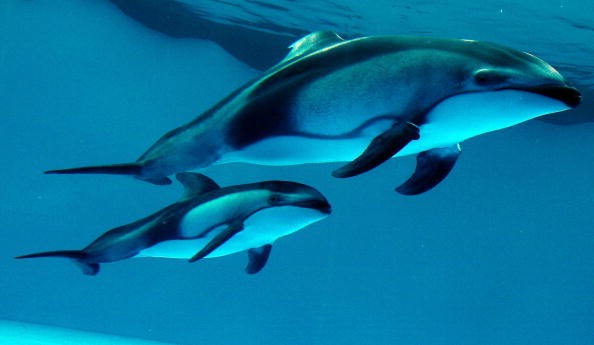A fungus affected hundreds of animals and humans in British Columbia and Washington State in the early 2000s. Scientists discovered that the infection killed porpoises and dolphins in the Salish Sea, suggesting that it may have affected cetaceans even before humans.

Cryptococcus gattii
A Study released on the 21st of October 2021 in Diseases of Aquatic Organisms covers how human-caused changes on land might influence aquatic creatures, focusing on the fungal disease Cryptococcus gattii.
A team of scientists from Canada and the Pacific Northwest, led by the University of California, Davis, put together the information regarding the fungal outbreak in marine animals. They collected and examined data gathered by veterinarians, microbiologists, marine animal scientists, and stranding responders over the course of decades.
C. gattii is a fungus that may cause disease of the lung and brain. It is obtained by breathing in fungus spores and dwells in soil and tree habitats.
It is not regarded as being contagious between individuals. Cryptococcus gattii was likely translocated to the Pacific Northwest in the early 1900s, while the specific methods of transmission are unclear. It is often found in tropical and subtropical forests, paralleling eucalyptus trees' distribution.
Humans, domestic animals, and terrestrial species got infected with C. gattii on Vancouver Island in 1999, and the disease spread to mainland British Columbia, Washington, Oregon, and California.
Also Read : Newly Discovered World's Oldest Fungus in South Africa Raises Questions About Early Life on Earth
The Discovery
The researchers also discovered that the fungal disease killed 42 dolphins and porpoises in the Salish Sea, including harbor porpoises, Dall's porpoises, and Pacific white-side dolphins.
Soil disturbance operations such as construction, deforestation, etc. may aerosolized C. gattii spores, infecting humans and animals that reside near the disturbed areas and breathe in the spores.
"As we change the environment in unprecedented ways, we could see more diseases that affect people and wildlife," said lead author Sarah Teman, a research assistant at the SeaDoc Society, a program of the Karen C. Drayer Wildlife Health Center at the University of California, Davis School of Veterinary Medicine.
The C. gattii-infected marine animals were discovered near terrestrial hotspots, suggesting that the spores dropped on the sea's surface, where porpoises and dolphins inhaled them as they surfaced to breathe.
Researchers also discovered evidence that the first possible case of C. gattii in the Pacific Northwest occurred in a Dall's porpoise in 1997, two years before the first human case in the area was identified in 1999.

Why Marine Mammals are Often Studied
"Often we study marine mammals because they play important roles in the ecosystem, and they are cool," said Joe Gaydos, a UC Davis wildlife veterinarian at SeaDoc Society and co-investigator. "Too often we forget that they can also alert us to diseases that affect humans."
The research was supported by the SeaDoc Society and the John H. Prescott Marine Mammal Rescue Assistance Grant.
The Animal Health Centre of the British Columbia Ministry of Agriculture, Foods and Fisheries, the BC Centre for Disease Control, Cascadia Research Collective, Fisheries and Oceans Canada, Marine-Med, NOAA Northwest Fisheries Science Center, Northwest ZooPath, and the Department of Pathology and Laboratory Medicine at the University of British Columbia are among the other co-authoring institutions.
Related Article : Outbreak of Untreatable, Drug-Resistant Superbug Fungus Unnerves Experts in 2 US Cities
For more news, updates about marine mammals and similar topics don't forget to follow Nature World News!
© 2026 NatureWorldNews.com All rights reserved. Do not reproduce without permission.





